| Season Start: | 30 December 1972 | | Season End: | 23 June 1973 | | Season Length: | 26 Weeks | | Writers: | Barry Letts, Bob Baker, Dave Martin, Malcolm Hulke, Robert Holmes, Robert Sloman and Terry Nation | | Directors: | Barry Letts, David Maloney, Lennie Mayne, Michael Briant and Paul Bernard | | Producer: | Barry Letts | | Script Editor: | Terrance Dicks | | Visual Effects: | Bernard Wilkie, Clifford Culley, Colin Mapson, John Horton, Len Hutton, Michealjohn Harris, Rhys Jones, Richard Conway and Ron Oates | | Title Sequence: | Bernard Lodge and Ben Palmer | | Title Music: | Ron Grainer and the BBC Radiophonic Workshop. Arranged by Delia Derbyshire |
|
Incarnation of the Doctor: |
The Third Doctor
|
|
Other Incarnations of the Doctor: |
The First Doctor (Returns) and The Second Doctor (Returns) |
| Number of
Companions: |
4 |
| The
Companions: |
The Brigadier, Sergeant Benton, Jo Grant (Departs) and Captain Mike Yates
|
| Number of
Stories: |
5
|
| Number of
Incomplete/Missing Stories: |
0
|
| Number of
Episodes: |
26
|
| Number of
Incomplete/Missing Episodes: |
0
|
| Percentages: |
| Full Stories Held | 100% | | Episodes Held | 100% |
|
| Doctor Who Magazine Poll (1998) | | | Doctor Who Magazine Poll (2009) | | | Doctor Who Magazine Poll (2014) | |
|
 'In our legends there is a being, a figure from another planet who came to Skaro when the Thals were in their greatest peril. In something called a TARDIS. He had three companions.' 'In our legends there is a being, a figure from another planet who came to Skaro when the Thals were in their greatest peril. In something called a TARDIS. He had three companions.'
Taron
(Planet of the Daleks) |
|
|
|
|
| |
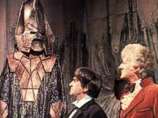 |
| Omega with Two Doctors |
|
 Season Ten started with a very special story to celebrate ten years of the show. "The Three Doctors" was very special indeed as for the first time it brought three incarnations of The Doctor together. For William Hartnell and Patrick Troughton this also became the first time they appeared in the show in colour. Season Ten started with a very special story to celebrate ten years of the show. "The Three Doctors" was very special indeed as for the first time it brought three incarnations of The Doctor together. For William Hartnell and Patrick Troughton this also became the first time they appeared in the show in colour.
 Being the current Doctor Jon Pertwee still took centre stage but this still allowed his predecessors to take full part in the storyline and they did not just play cameo roles. In fact after the Third Doctor crossed over the time bridge, leaving the Second Doctor at UNIT, Patrick Troughton gave a wonderful performance alongside a dumbfounded Brigadier (played by Nicholas Courtney). This story became the first of Patrick Troughton's three returns to the program (The others being 1983 Fifth Doctor story "The Five Doctors" and 1985 Sixth Doctor story "The Two Doctors"). Being the current Doctor Jon Pertwee still took centre stage but this still allowed his predecessors to take full part in the storyline and they did not just play cameo roles. In fact after the Third Doctor crossed over the time bridge, leaving the Second Doctor at UNIT, Patrick Troughton gave a wonderful performance alongside a dumbfounded Brigadier (played by Nicholas Courtney). This story became the first of Patrick Troughton's three returns to the program (The others being 1983 Fifth Doctor story "The Five Doctors" and 1985 Sixth Doctor story "The Two Doctors").
 Sadly though William Hartnell's failing health prevented him from taking an active role, as the First Doctor, in the entire story – resulting in a re-write so that his involvement could be restricted to brief scenes that were pre-filmed and then shown on a monitor. This story was to become the last appearance in the show for this well respected actor, and indeed his final work as an actor, as he passed away, two years later, in April 1975. Sadly though William Hartnell's failing health prevented him from taking an active role, as the First Doctor, in the entire story – resulting in a re-write so that his involvement could be restricted to brief scenes that were pre-filmed and then shown on a monitor. This story was to become the last appearance in the show for this well respected actor, and indeed his final work as an actor, as he passed away, two years later, in April 1975.
 "The Three Doctors" was a milestone in more ways than one. Being the first multi-Doctor story it established the concept of The Doctor being able to meet his past incarnations. However more importantly with the show's ratings now stable after the ups and down of the late Sixties, Producer Barry Letts and Script Editor Terrance Dicks had decided to use this story as a vehicle for removing the Earthbound constraints which had been imposed on the programme for budgetary reasons since the beginning of the Third Doctor’s era which began with Season Seven in 1970. And so, at the conclusion of this story, the Time Lords are seen to reverse their decision to banish him by sending back his dematerialisation circuit in thanks for defeating Omega. The Doctor was once again free to travel in all of space and time. This therefore allowed the season to start with a story mainly set on Earth and to end on Earth but with the other three stories set in outer space and on other alien worlds that The Doctor would visit without the intervention of the Time Lords. "The Three Doctors" was a milestone in more ways than one. Being the first multi-Doctor story it established the concept of The Doctor being able to meet his past incarnations. However more importantly with the show's ratings now stable after the ups and down of the late Sixties, Producer Barry Letts and Script Editor Terrance Dicks had decided to use this story as a vehicle for removing the Earthbound constraints which had been imposed on the programme for budgetary reasons since the beginning of the Third Doctor’s era which began with Season Seven in 1970. And so, at the conclusion of this story, the Time Lords are seen to reverse their decision to banish him by sending back his dematerialisation circuit in thanks for defeating Omega. The Doctor was once again free to travel in all of space and time. This therefore allowed the season to start with a story mainly set on Earth and to end on Earth but with the other three stories set in outer space and on other alien worlds that The Doctor would visit without the intervention of the Time Lords.
 The first of these was "Carnival of Monsters" in which The Doctor and his companion Jo Grant find themselves inside a Miniscope – a machine used for entertainment that The Doctor thought had all been disposed of when, in the past, he had ensured that the Time Lord High Council had them banned. At first The Doctor and Jo think they are still on Earth, on a cargo ship on the Indian Ocean, but they soon realise that things are not quite right. They are in fact on the planet Inter Minor where a travelling showman and his assistant have arrived to earn some credit bars by entertaining the populous. The first of these was "Carnival of Monsters" in which The Doctor and his companion Jo Grant find themselves inside a Miniscope – a machine used for entertainment that The Doctor thought had all been disposed of when, in the past, he had ensured that the Time Lord High Council had them banned. At first The Doctor and Jo think they are still on Earth, on a cargo ship on the Indian Ocean, but they soon realise that things are not quite right. They are in fact on the planet Inter Minor where a travelling showman and his assistant have arrived to earn some credit bars by entertaining the populous.
 The next two stories could be considered to be one whole story arc – covering twelve episodes. "Frontier in Space" introduces the Draconians – described as Jon Pertwee’s favourite alien race. This story also sees the return of The Master – the last time The Doctor’s arch-enemy would be played by Roger Delgado. Sadly Roger Delgado was tragically killed in an automobile accident in Turkey, while travelling to a location shoot for a film. His untimely death was less than three months after this story’s broadcast and brought a premature end to both a beloved Doctor Who character, and indeed a well respected member of the acting profession. This story finished with the revelation that The Master had been working for the Daleks – which lead directly into the next story – the classic "Planet of the Daleks" in which The Doctor’s deadliest foes would yet again prove to be a force to be reckoned with. The Doctor though is not alone in having to face the Daleks. As well as the ever resourceful Jo, help also arrives in the form of the Dalek’s home planet Skaro’s other indigenous race - the Thals – who The Doctor last encountered in the very first Dalek story – "The Daleks". The next two stories could be considered to be one whole story arc – covering twelve episodes. "Frontier in Space" introduces the Draconians – described as Jon Pertwee’s favourite alien race. This story also sees the return of The Master – the last time The Doctor’s arch-enemy would be played by Roger Delgado. Sadly Roger Delgado was tragically killed in an automobile accident in Turkey, while travelling to a location shoot for a film. His untimely death was less than three months after this story’s broadcast and brought a premature end to both a beloved Doctor Who character, and indeed a well respected member of the acting profession. This story finished with the revelation that The Master had been working for the Daleks – which lead directly into the next story – the classic "Planet of the Daleks" in which The Doctor’s deadliest foes would yet again prove to be a force to be reckoned with. The Doctor though is not alone in having to face the Daleks. As well as the ever resourceful Jo, help also arrives in the form of the Dalek’s home planet Skaro’s other indigenous race - the Thals – who The Doctor last encountered in the very first Dalek story – "The Daleks".
 Despite being given his freedom to travel anywhere in time and space The Doctor would still continue to assist UNIT and to do what he can to protect his adoptive planet. And this is certainly the case in the final story of the season. "The Green Death" has The Doctor, Jo and UNIT in Wales fighting against the threat of giant maggots caused by the dumping of hazardous waste into a disused coal mine. But the real threat comes from BOSS - a large and powerful computer, housed inside Global Chemicals, that has plans for world domination. Despite being given his freedom to travel anywhere in time and space The Doctor would still continue to assist UNIT and to do what he can to protect his adoptive planet. And this is certainly the case in the final story of the season. "The Green Death" has The Doctor, Jo and UNIT in Wales fighting against the threat of giant maggots caused by the dumping of hazardous waste into a disused coal mine. But the real threat comes from BOSS - a large and powerful computer, housed inside Global Chemicals, that has plans for world domination.
 This last story of the season, however, is now remembered as the one in which Katy Manning, who played Jo Grant, left the show. The departure of Katy Manning marked the beginning of the end for the so-called UNIT family, which had been together since the start of Season Eight - two and a half years earlier. From her bumbling start, in "Terror of the Autons", Jo Grant had transformed into a much loved travelling companion – and one that The Doctor, and the viewers, would truly miss. This last story of the season, however, is now remembered as the one in which Katy Manning, who played Jo Grant, left the show. The departure of Katy Manning marked the beginning of the end for the so-called UNIT family, which had been together since the start of Season Eight - two and a half years earlier. From her bumbling start, in "Terror of the Autons", Jo Grant had transformed into a much loved travelling companion – and one that The Doctor, and the viewers, would truly miss.
 The Doctor's exile having been finally lifted by the Time Lords had given the show a new lease of life and thanks to the hard work, put into the show in previous seasons, Doctor Who continued to enjoy tremendous growth with "The Three Doctors" even achieving more than 10 million viewers – something no story had achieved since the 1965 First Doctor story "The Web Planet" way back in Season Two. Even the least watched story, "Frontier in Space", achieved a very respectable 8 million viewers. At this time it was welcome news that this anniversary season had seen Doctor Who perform as well in the ratings as it ever had, even returning to the top ten programmes of the week during the broadcast of "The Three Doctors". After years of uncertainty the show certainly deserved its renewed success. The Doctor's exile having been finally lifted by the Time Lords had given the show a new lease of life and thanks to the hard work, put into the show in previous seasons, Doctor Who continued to enjoy tremendous growth with "The Three Doctors" even achieving more than 10 million viewers – something no story had achieved since the 1965 First Doctor story "The Web Planet" way back in Season Two. Even the least watched story, "Frontier in Space", achieved a very respectable 8 million viewers. At this time it was welcome news that this anniversary season had seen Doctor Who perform as well in the ratings as it ever had, even returning to the top ten programmes of the week during the broadcast of "The Three Doctors". After years of uncertainty the show certainly deserved its renewed success.
 But as this anniversary season drew to a close it was tinged with sadness caused by the shock of the news about Roger Delgado’s untimely death so ending one of the best portrayal of The Doctor’s arch enemy, The Master, and the heart wrenching scene of The Doctor driving off alone, into the sunset in Bessie, after having to part company with Jo. But as this anniversary season drew to a close it was tinged with sadness caused by the shock of the news about Roger Delgado’s untimely death so ending one of the best portrayal of The Doctor’s arch enemy, The Master, and the heart wrenching scene of The Doctor driving off alone, into the sunset in Bessie, after having to part company with Jo.
 But even before the season finished the tenth recording block continued with one more story that would be the first to be shown in Season Eleven. This story was "The Time Warrior" which is famous for heralding the introduction of another classic Doctor Who monster – the Sontarans - and more importantly for the show the introduction of a character who become one of the most popular Doctor Who companions of all time – journalist Sarah Jane Smith. But even before the season finished the tenth recording block continued with one more story that would be the first to be shown in Season Eleven. This story was "The Time Warrior" which is famous for heralding the introduction of another classic Doctor Who monster – the Sontarans - and more importantly for the show the introduction of a character who become one of the most popular Doctor Who companions of all time – journalist Sarah Jane Smith.
|
|
|
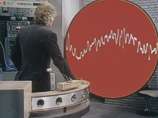 |
| BOSS |
|
 "The Three Doctors" demonstrates for the first time the mildly antagonistic relationship that the previous incarnations of The Doctor have for themselves. This is especially noticeably between the Second Doctor and the Third Doctor. A memorable example of this is the scene where The Third Doctor and his companion Jo Grant, who are trapped inside the TARDIS, are joined by the Second Doctor. This leads to both Doctors trying to explain to Jo who the Second Doctor is which includes the classic line spoken by the Third Doctor ‘Jo, it's all quite simple - I am he and he is me!’. This though confuses her even more. The scene continues with each incarnation of The Doctor getting in each others way and generally arguing over the best course of action to free the TARDIS. The Time Lords, aware that they are not getting along decide to obtain the assistance of the First Doctor. On appearing on the TARDIS view screen he dismisses his other incarnations with the brilliant conversation: ‘Ah, there you are! I seem to be stuck up here. So you're my replacements! A dandy and a clown! Have you done anything? in which the gobsmacked Second Doctor replies: ‘Uh, well we've assessed the situation’ which then prompts the First Doctor to reply with ‘Just as I thought. Nothing’. "The Three Doctors" demonstrates for the first time the mildly antagonistic relationship that the previous incarnations of The Doctor have for themselves. This is especially noticeably between the Second Doctor and the Third Doctor. A memorable example of this is the scene where The Third Doctor and his companion Jo Grant, who are trapped inside the TARDIS, are joined by the Second Doctor. This leads to both Doctors trying to explain to Jo who the Second Doctor is which includes the classic line spoken by the Third Doctor ‘Jo, it's all quite simple - I am he and he is me!’. This though confuses her even more. The scene continues with each incarnation of The Doctor getting in each others way and generally arguing over the best course of action to free the TARDIS. The Time Lords, aware that they are not getting along decide to obtain the assistance of the First Doctor. On appearing on the TARDIS view screen he dismisses his other incarnations with the brilliant conversation: ‘Ah, there you are! I seem to be stuck up here. So you're my replacements! A dandy and a clown! Have you done anything? in which the gobsmacked Second Doctor replies: ‘Uh, well we've assessed the situation’ which then prompts the First Doctor to reply with ‘Just as I thought. Nothing’.
 Another must see event in this story is Sergeant Benton’s and The Brigadier’s first trip in the TARDIS. While Sergeant Benton does not seem to be phased by the TARDIS the exact opposite could be said for his commanding officer. After the Third Doctor queries Sergeant Benton with the line: ‘Well Sergeant, aren't you going to say that it's bigger on the inside than it is on the outside - everybody else does’ Benton replies calmly with the line ‘That's pretty obvious isn't it?’. The Brigadier though is not convinced that the TARDIS can travel anywhere in time and space and after exiting the TARDIS he storms off to get help convinced they have arrived in Cromer! Another must see event in this story is Sergeant Benton’s and The Brigadier’s first trip in the TARDIS. While Sergeant Benton does not seem to be phased by the TARDIS the exact opposite could be said for his commanding officer. After the Third Doctor queries Sergeant Benton with the line: ‘Well Sergeant, aren't you going to say that it's bigger on the inside than it is on the outside - everybody else does’ Benton replies calmly with the line ‘That's pretty obvious isn't it?’. The Brigadier though is not convinced that the TARDIS can travel anywhere in time and space and after exiting the TARDIS he storms off to get help convinced they have arrived in Cromer!
 Finally in "The Green Death" look out for the scene where The Doctor temporarily stumps BOSS by asking ‘If I were to tell you that the next thing I say would be true, but the last thing I said was a lie, would you believe me?’. BOSS at first realises that this is an illogical question but after being goaded by The Doctor he attempts to find an answer – a task that even this powerful computer is unable to achieve. Finally in "The Green Death" look out for the scene where The Doctor temporarily stumps BOSS by asking ‘If I were to tell you that the next thing I say would be true, but the last thing I said was a lie, would you believe me?’. BOSS at first realises that this is an illogical question but after being goaded by The Doctor he attempts to find an answer – a task that even this powerful computer is unable to achieve.
|
|
|
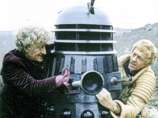 |
| A Defenceless Dalek |
|
 The highest point of this season has to go to the 10th anniversary special "The Three Doctors" which for the first time in the shows 9 year history ("The Three Doctors" was broadcast at the beginning of the anniversary season - which started just 3 months after the show’s 9th birthday) brought together multiple Doctors, in the form of the Third Doctor being joined first by the Second Doctor and then the First Doctor. The highest point of this season has to go to the 10th anniversary special "The Three Doctors" which for the first time in the shows 9 year history ("The Three Doctors" was broadcast at the beginning of the anniversary season - which started just 3 months after the show’s 9th birthday) brought together multiple Doctors, in the form of the Third Doctor being joined first by the Second Doctor and then the First Doctor.
 This story included some memorable banter between the individual incarnations - especially between the Second and Third Doctors - and involving companion Jo Grant, The Brigadier and Sergeant Benton. This story included some memorable banter between the individual incarnations - especially between the Second and Third Doctors - and involving companion Jo Grant, The Brigadier and Sergeant Benton.
 This story also introduced Omega - another member of The Doctors own race. Omega was a Gallifreyan solar engineer who, after giving the Time Lords their ability to travel in time, found himself trapped the other side of a black hole in a world of anti-matter that he created out of his own will power. The Doctor is shocked to discover the fate that has befallen this hero from Time Lord mythology and how embittered Omega has become after being abandoned by the Time Lords. The Doctor though soon realises how dangerous Omega has become in his determination in seeking revenge on the Time Lords. And so The Doctor is forced to trick Omega so that everyone can return to Earth and the power drain, that is affecting Gallifrey, is stopped. This story also introduced Omega - another member of The Doctors own race. Omega was a Gallifreyan solar engineer who, after giving the Time Lords their ability to travel in time, found himself trapped the other side of a black hole in a world of anti-matter that he created out of his own will power. The Doctor is shocked to discover the fate that has befallen this hero from Time Lord mythology and how embittered Omega has become after being abandoned by the Time Lords. The Doctor though soon realises how dangerous Omega has become in his determination in seeking revenge on the Time Lords. And so The Doctor is forced to trick Omega so that everyone can return to Earth and the power drain, that is affecting Gallifrey, is stopped.
 Other high points of this season include "Planet of the Daleks", where The Doctor discovers that The Daleks have amassed a huge army and he encounters some old friends – The Thals. And then in the final story of the season, "The Green Death", in which we have a storyline involving the outcome of the reckless disposal of toxic waste so resulting in large maggots, and many characters tacking on a green hue. Other high points of this season include "Planet of the Daleks", where The Doctor discovers that The Daleks have amassed a huge army and he encounters some old friends – The Thals. And then in the final story of the season, "The Green Death", in which we have a storyline involving the outcome of the reckless disposal of toxic waste so resulting in large maggots, and many characters tacking on a green hue.
 Unfortunately "The Green Death" also contains the lowest point of the season. After starting on such a high the season ended with Jo Grant falling in love with Professor Clifford Jones, a Nobel prize winning ecologist, and announcing that as well as accompanying the Professor, on his planned trip up the Amazon, that she would also marry him. The Doctor is naturally saddened. After wishing her well and as a celebration party starts up, The Doctor departs alone in Bessie driving off into the sunset... Unfortunately "The Green Death" also contains the lowest point of the season. After starting on such a high the season ended with Jo Grant falling in love with Professor Clifford Jones, a Nobel prize winning ecologist, and announcing that as well as accompanying the Professor, on his planned trip up the Amazon, that she would also marry him. The Doctor is naturally saddened. After wishing her well and as a celebration party starts up, The Doctor departs alone in Bessie driving off into the sunset...
|
|
|
|
|
| |
The Firsts:
 The first time The Doctor meets previous incarnations of himself. (The Three Doctors) The first time The Doctor meets previous incarnations of himself. (The Three Doctors)
 The first time William Hartnell and Patrick Troughton appeared in the show in colour. (The Three Doctors) The first time William Hartnell and Patrick Troughton appeared in the show in colour. (The Three Doctors)
 The first appearance of Omega. (The Three Doctors) The first appearance of Omega. (The Three Doctors)
 The first time, since the beginning of the Third Doctor's era, that The Doctor has been able to use his TARDIS to travel in space and time. (Carnival of Monsters) The first time, since the beginning of the Third Doctor's era, that The Doctor has been able to use his TARDIS to travel in space and time. (Carnival of Monsters)
 The first (and only) appearance for the Draconians. (Frontier in Space) The first (and only) appearance for the Draconians. (Frontier in Space)
 The first Dalek story written by Terry Nation since the 1965/66 First Doctor story "The Daleks' Master Plan". (Planet of the Daleks) The first Dalek story written by Terry Nation since the 1965/66 First Doctor story "The Daleks' Master Plan". (Planet of the Daleks)
 The first time The Doctor visits Metebelis 3 - the famous blue planet of the Acteon group. (The Green Death) The first time The Doctor visits Metebelis 3 - the famous blue planet of the Acteon group. (The Green Death)
|
| |
The Lasts (Subject to Future Stories):
| |
| Doctor Who CMS Magazine (An Adventure in Space and Time) | Season Ten Special | | Doctor Who Magazine - Episode Guide | Issue 146 - (Released: March 1989) | | Doctor Who Magazine - Countdown to 50 | Issue 439 - (Released: October 2011) |
| Title | Release Date (UK) | Format | Source | Companions | | Dancing the Code | April 1995 | Novel | The Missing Adventures | The Brigadier, Captain Mike Yates, Sergeant Benton and Jo Grant | | ...And Eternity in an Hour | July 1996 | Short Story | Decalog 3: Consequences | Jo Grant | | Speed of Flight | October 1996 | Novel | The Missing Adventures | Captain Mike Yates and Jo Grant | | Catastrophea | May 1998 | Novel | The Past Doctors Stories | Jo Grant | | The Wages of Sin | February 1999 | Novel | The Past Doctors Stories | Liz Shaw and Jo Grant | | Last of the Gaderene | January 2000 | Novel | The Past Doctors Stories | The Brigadier, Captain Mike Yates, Sergeant Benton and Jo Grant | | Nightdreamers | May 2002 | Novel | Doctor Who Novellas | Jo Grant | | The Suns of Caresh | August 2002 | Novel | The Past Doctors Stories | Jo Grant | | Hidden Talent | March 2003 | Short Story | The Big Finish Short Trips 2: Companions | Jo Grant | | Losing Track of Time | June 2003 | Short Story | The Big Finish Short Trips 3: A Universe of Terrors | Jo Grant | | Deep Stretch | December 2003 | Short Story | The Big Finish Short Trips 5: Steel Skies | Jo Grant | | Come Friendly Bombs… | April 2004 | Short Story | The Big Finish Short Trips 6: Past Tense | Jo Grant | | The Seismologist's Story | June 2004 | Short Story | The Big Finish Short Trips 8: Repercussions | Jo Grant | | /Carpenter/Butterfly/Baronet/ | October 2004 | Short Story | The Big Finish Short Trips 10: 2040 | Jo Grant | | The Bad Guy | March 2006 | Short Story | The Big Finish Short Trips 16: Farewells | Jo Grant | | Dream Devils | September 2006 | Short Story | The Big Finish Short Trips 17: The Centenarian | | | Echoes | September 2006 | Short Story | The Big Finish Short Trips 17: The Centenarian | | | Hide and Seek | December 2006 | Short Story | The Big Finish Short Trips 19: Dalek Empire | Jo Grant | | She Knew | August 2007 | Short Story | The Big Finish Short Trips 21: Snapshots | | | Faithful Friends - Parts 1, 2 & 3 | December 2007 | Short Story | The Big Finish Short Trips 22: The Ghosts of Christmas | The Brigadier | | Rock Star | March 2008 | Short Story | The Big Finish Short Trips 24: The Quality of Leadership | Jo Grant | | Lost and Founded | December 2008 | Short Story | The Big Finish Short Trips 27: Christmas Around The World | Jo Grant | | Midnight in the Café of the Black Madonna | May 2009 | Short Story | The Big Finish Short Trips 29: Re:Collections | | | The Prisoner of Peladon | September 2009 | Audio | The Big Finish Audio Stories (Companion Chronicles) | | | The Many Deaths of Jo Grant | October 2011 | Audio | The Big Finish Audio Stories (Companion Chronicles) | Jo Grant |
|
|
| |
The Doctor and Companions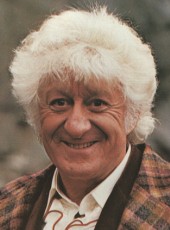 | | The Third Doctor |
| 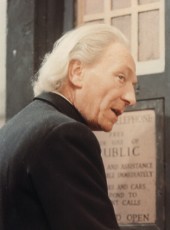 | | The First Doctor |
|  | | The Second Doctor |
|
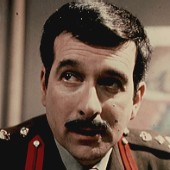 | | The Brigadier |
| 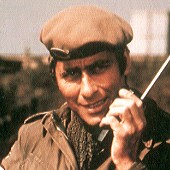 | | Sergeant Benton |
| 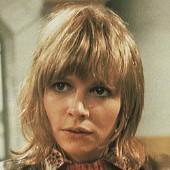 | | Jo Grant |
| | | | | 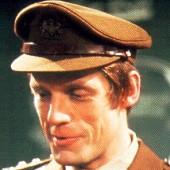 | | Captain Mike Yates |
|
|
On Release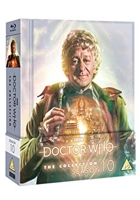 | | The Collection Season 10 Limited Edition Blu-Ray Cover |

VIDEO |
| | 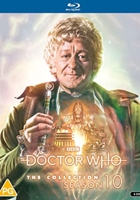 | | The Collection Season 10 Standard Edition Blu-Ray Cover |

VIDEO |
| | | | |
Magazines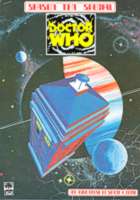 | | Doctor Who CMS Magazine (An Adventure in Space and Time): Season Ten Special |
|  | | Doctor Who Magazine - Episode Guide: Issue 146 |
|  | | Doctor Who Magazine - Countdown to 50: Issue 439 |
| | | | |
|
|
|
| |
| |
|
| |
| |
|
| Doctor Who is the copyright of the British Broadcasting
Corporation. No infringements intended. This site is not endorsed by the BBC or
any representatives thereof. |
|